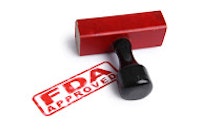The FDA’s Final Food Traceability Rule
In November, the FDA released the final Food Traceability Rule, detailing the requirements for record-keeping of foods on the Food Traceability List (FTL). The purpose of the Food Traceability Rule is to make it faster and easier for the FDA and other regulators to pinpoint locations in the supply chain where food contamination occurs.
Previous Traceability Rule guidance lacked the level of granularity needed to track food items back to a specific farm, ranch, or lot. Specific records are now required of manufacturers who handle any of the ingredients on the FTL. The deadline for compliance is January 20, 2026, and manufacturers must begin planning immediately.
Who Does the Food Traceability Rule Apply To?
In short, the food traceability rule applies to any entity — farmer, manufacturer, distributor, etc. — that handles any food on the FTL which includes:
Cheeses, other than hard cheeses
Shell eggs
Nut butters
Cucumbers (fresh)
Herbs (fresh)
Leafy greens (fresh)
Melons (fresh)
Peppers (fresh)
Sprouts (fresh)
Tomatoes (fresh)
Tropical tree fruits (fresh)
Fruits (fresh-cut)
Vegetables other than leafy greens (fresh-cut)
Finfish (fresh and frozen)
Smoked finfish (refrigerated and frozen)
Crustaceans (fresh and frozen)
Molluscan shellfish, bivalves (fresh and frozen)
Ready-to-eat deli salads (refrigerated)
The FDA conducted extensive research to determine whether these foods are in a high-risk category for foodborne illness and contamination. One change from the proposed final rule is an acknowledgment that vegetables and fruits that are dried or frozen are now exempt. There are other specifics as to why certain foods or businesses are exempt, so it is important that you have a thorough understanding of updates to the finalized Food Traceability Rule.
What Is Required by the Food Traceability Rule?
The Rule will require handlers of these ingredients to keep meticulous records across the entire supply chain. Record-keeping practices and language within the records must be synonymous with both your national and international suppliers. Two of the most important records to your business are the Critical Tracking Events (CTEs) and Key Data Elements (KDEs). CTEs are events along the supply chain that require records, and KDEs are the pieces of information that should be included in that record. In the event of an investigation or recall, the FDA wants access to easy-to-understand data within 24 hours, or “a reasonable time” previously agreed to.
What Can You Do to Prepare For Compliance?
The FDA has not created any template for manufacturers to draw on and compliance by 2026 relies on efficient planning that begins now.
Manufacturers must create a Food Traceability Plan that informs record-keeping practices alongside their typical operating procedures. It should clearly outline the way food is traced, how lot codes are assigned, the steps taken to identify foods on the FTL, a point of contact, and anything else associated with the handling of these ingredients.
The types of data you record will be dependent on your type of organization and the products you handle, so it’s crucial to familiarize yourself with the new Rule and be prepared.
In partnership with The Acheson Group (TAG), SafetyChain developed an in-depth guide for food and beverage manufacturers to gain a clearer understanding of the FDA’s Food Traceability Rule. Take time to read the complete Guide to the Finalized FDA Food Traceability Rule, to know how to best prepare for the January 2026 compliance deadline.



